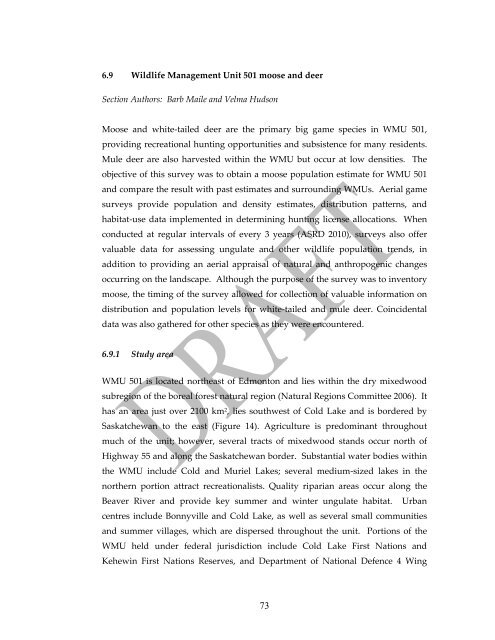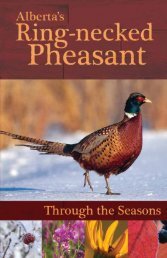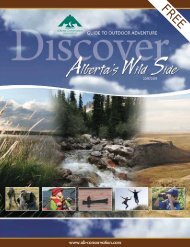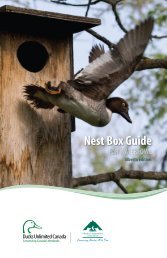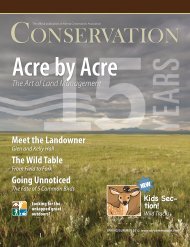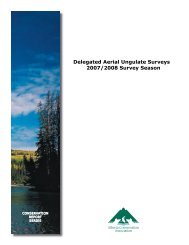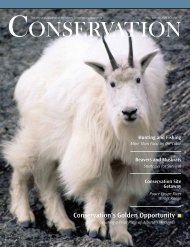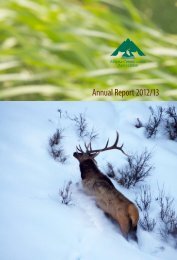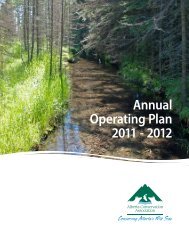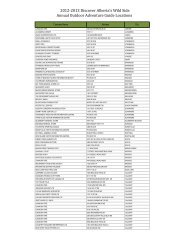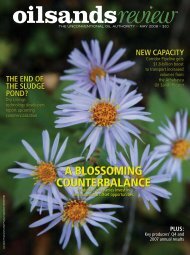Delegated Aerial Ungulate Surveys 2009/2010 Survey Season
Delegated Aerial Ungulate Surveys 2009/2010 Survey Season
Delegated Aerial Ungulate Surveys 2009/2010 Survey Season
Create successful ePaper yourself
Turn your PDF publications into a flip-book with our unique Google optimized e-Paper software.
6.9 Wildlife Management Unit 501 moose and deerSection Authors: Barb Maile and Velma HudsonMoose and white‐tailed deer are the primary big game species in WMU 501,providing recreational hunting opportunities and subsistence for many residents.Mule deer are also harvested within the WMU but occur at low densities. Theobjective of this survey was to obtain a moose population estimate for WMU 501and compare the result with past estimates and surrounding WMUs. <strong>Aerial</strong> gamesurveys provide population and density estimates, distribution patterns, andhabitat‐use data implemented in determining hunting license allocations. Whenconducted at regular intervals of every 3 years (ASRD <strong>2010</strong>), surveys also offervaluable data for assessing ungulate and other wildlife population trends, inaddition to providing an aerial appraisal of natural and anthropogenic changesoccurring on the landscape. Although the purpose of the survey was to inventorymoose, the timing of the survey allowed for collection of valuable information ondistribution and population levels for white‐tailed and mule deer. Coincidentaldata was also gathered for other species as they were encountered.6.9.1 Study areaWMU 501 is located northeast of Edmonton and lies within the dry mixedwoodsubregion of the boreal forest natural region (Natural Regions Committee 2006). Ithas an area just over 2100 km 2 , lies southwest of Cold Lake and is bordered bySaskatchewan to the east (Figure 14). Agriculture is predominant throughoutmuch of the unit; however, several tracts of mixedwood stands occur north ofHighway 55 and along the Saskatchewan border. Substantial water bodies withinthe WMU include Cold and Muriel Lakes; several medium‐sized lakes in thenorthern portion attract recreationalists. Quality riparian areas occur along theBeaver River and provide key summer and winter ungulate habitat. Urbancentres include Bonnyville and Cold Lake, as well as several small communitiesand summer villages, which are dispersed throughout the unit. Portions of theWMU held under federal jurisdiction include Cold Lake First Nations andKehewin First Nations Reserves, and Department of National Defence 4 Wing73


